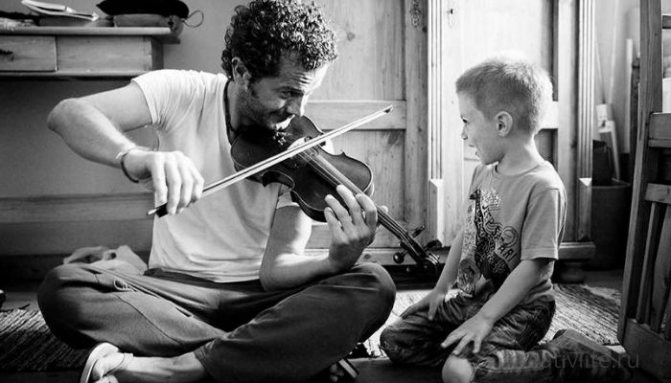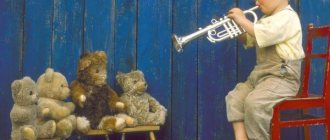Sex and gender
In modern society, it is customary to distinguish between the concepts of sex and gender. Gender is a biological characteristic of an individual that determines the distinctive characteristics of a man and a woman at the chromosomal, anatomical, hormonal and reproductive levels. Gender usually means the social sex of an individual, the differences between men and women depending on social conditions. Such conditions may include social functions, a system of social division of labor, cultural stereotypes, etc. Thus, gender acts as a sociocultural phenomenon, meaning what it means to be a man/woman in a certain society. For example, if a man does not work, but is engaged in raising his children, then in a traditional society his behavior will be considered atypical (unmasculine) in terms of gender roles. However, despite this, according to biological characteristics, this individual does not become “less of a man.”
As for the acceptability of certain norms that determine an individual’s gender, they are initially set by society itself and its culture. In American sociological theory, the concept of gender developed gradually. At the same time, at different stages of development of this concept, various aspects were in the focus:
- gender from the perspective of the social roles of men and women,
- gender as an expression of power relations,
- gender as control over the behavior of men and women,
— gender as a special social institution.
The social roles of men and women are usually considered in two directions - vertical and horizontal. Thus, in the first case, gender is considered in the context of such concepts as income and wealth, power, prestige, etc. From the position of the horizontal approach, the institutional aspect of differentiation (politics, economics, education, family) and functional (division of responsibilities in the process of implementation) is considered. labor).
According to the concept of Sandra Bem (1944), three types of gender should be distinguished: masculine, feminine and androgynous.
Development of children taking into account gender in preschool educational institutions
Ekaterina Kovaleva
Development of children taking into account gender in preschool educational institutions
“How can Vasya play with dolls, he’s a boy.”
,
"Girls can't be firefighters."
,
“
Isn’t Petya a girl , he has long hair?” Such statements are familiar to every kindergarten teacher and every parent.
Our attitude towards gender develops very early .
Research shows that by the age of two, children begin to notice physical differences, and by the age of three they have formed ideas about behavior, activities, etc., which correlate with a person’s gender. What is gender ?
Translated from English gender means “gender”
,
"floor"
.
But this is not just a designation of differences between girls and boys. Unlike the concept of “sex,”
which is responsible for the biological functions of human individuals,
gender is the “social sex”
of an individual.
It is not given at birth, it is not encoded by the X and Y chromosomes, but is formed in the process of upbringing and cultural formation of the individual. This concept includes the entire rich palette of differences (in the psychological, cultural and social sense)
between men and women.
When a woman bears a child, this is a function of her biological sex, but if the message is “boys don’t cry”
or
“give way, you’re a girl,”
this is already the realm
of gender stereotypes .
Studying gender identity , gender roles , stereotypes and developing a healthy view of one’s gender and self
starts quite early.
Therefore, in kindergarten, attention must be paid to gender education , the practical implementation of which is carried out by both educators, teachers and psychologists, and parents.
Gender differentiation is a process when a child realizes and assimilates his belonging to the male or female sex, and this awareness becomes an integral quality of the individual.
Currently, the problem of gender education of children has become very urgent. Among the reasons, the following can be noted:
- unification of the sexes, feminization of men and masculinization of women;
- dulling of the sense of gender identity ;
— growth of inappropriate forms of behavior among young people;
— an increase in problems associated with loneliness and instability of marital relationships.
The relevance of gender education is also determined by the fact that domestic pedagogy is mainly focused primarily on the psychological and age-related characteristics of the child, although many teachers have already begun to take into account the difference in psycho-physiological characteristics, intellectual abilities and methods of perception, needs and social behavior of children of different sexes . The preschool education system is highly fiminized, and at home, a significant part of families grow up in single-parent families. This situation has a very negative impact, especially for boys.
Gender education is a complex process that manifests itself in any type of activity. The basis the gender approach is differentiation by gender, taking into account the socio-biological characteristics of children in the educational process. With a gender approach to the organization of educational activities for preschoolers, the best conditions are created for children to acquire knowledge through the selection of forms, content, pace, methods and volumes of education.
A differentiated approach to teaching girls and boys is associated with the following features:
• Psychological characteristics of the development of boys and girls in various activities
The brains of boys and girls develop at different times , in different sequences and even at different rates. In girls, the left hemisphere of the brain, which is responsible for rational and logical thinking and speech, is formed earlier. In boys, the left hemisphere of the brain develops more slowly , so the figurative-sensual sphere dominates until a certain age.
Boys tend to have more volatile moods and are more difficult to calm down. Girls tend to be more emotionally stable.
Boys are characterized by mobility, they grow more resilient, and show negative emotions more clearly. Girls are more susceptible to the emotional state of others, speech appears earlier. Boys love to play together, and they also like to compete with each other and start fights. Girls tend, especially after 2 years, to play in small groups; intimacy of the situation, alienation, and cooperation are important for them.
• Educational process.
During the learning process, it is important to take into account that girls and boys perceive information differently. If auditory perception is important for girls, then for boys it is preferable to use visual means based on visual perception.
• Visual activities
Visual arts classes should be conducted in such a way that every child, regardless of gender, can express what is emotionally significant or interesting to him. When learning in modeling, applique or drawing classes, you should remember that the movements of the hand of boys in their development lag behind the hand of girls by 1.5 years.
When assessing the results of children's activities and their behavior , it should be remembered that intonation and the form of its assessment are important for girls. Positive evaluation in the presence of other children or parents is very meaningful for girls. At the same time, it is important for boys to evaluate that he has achieved a result. Every new skill or result that the boy managed to achieve has a positive effect on his personal growth, allows him to be proud of himself and try to achieve new goals. However, it is common for boys to improve this skill when they achieve a certain result, which leads to drawing or designing the same thing. This requires understanding on the part of the teacher.
• Play activities.
It has been noticed that the styles and content of games for boys and girls differ from each other. Boys are characterized by active, noisy games, while girls are characterized by quieter ones, on family and everyday topics. For educators, the second type of games is closer, since it is not associated with the likelihood of increased injuries and noise. As a result, future men are deprived of truly boyish games, and this has a negative impact on their development as individuals .
children’s play activities so that children, during joint games, have the opportunity to act together, in accordance with gender characteristics . In this case, boys take on male roles, girls - female ones. Theatrical activities also help with this.
• Music classes.
Various types of musical activities can be carried out taking into account the gender characteristics of children .
Musical-rhythmic movements take into account the gender approach as follows - boys learn elements of dance and movement that require agility, masculine strength (gallant soldiers, riders, girls learn softness and smoothness of movements (exercises with ribbons, balls, round dances)
. While learning dances (quadrille, polka, waltz), boys gain the skills of a leading partner, girls learn the elegant and graceful elements of dance.
Playing musical instruments is organized differently - boys play drums and spoons, girls play bells and tambourines.
Games and songs about girls and boys help develop a child's understanding of their gender and positive gender acceptance .
• Theatrical activities.
One of the methods of gender education is manifested in theatrical activities. Men's and women's costumes, fairy tales and poems, staging performances, through the synthesis of music, artistic expression and dance, allow one to master traditional personality traits - femininity for girls and masculinity for boys. One of the manifestations of this approach is the organization of themed holidays for girls and boys.
• Physical education.
Boys and girls study together, but methodological techniques take into account gender characteristics :
- difference in the duration of the lesson (girls jump for 1 minute, boys - 1.5)
- differences in the selection of exercises only for boys or only for girls (boys work on a rope or do push-ups, and girls with ribbons or hoops)
— differences in dosage (boys do 10 push-ups, and girls 5)
- differences in learning complex motor movements (throwing at a distance is easier for boys and vice versa, jumping rope is easier for girls)
- distribution of roles in outdoor games (boys are bears, and girls are bees)
- differences in the assessment of activities (for boys it is important what is assessed in their activities, and for girls – who evaluates them and how)
- differences in the requirements for the quality of execution of exercises (boys are required to have more rhythm and clarity, girls - plasticity, grace)
— focusing on the fact that there are men's and women's sports.
Girls and boys cannot be raised the same. But there are certain values, norms of behavior and prohibitions that everyone, regardless of gender, must learn, which are important in any society: tolerance, respect for oneself and others, the ability to make choices, the ability to bear responsibility, mercy.
Feminine type
Often seen as the opposite of the masculine type. Feminine gender implies the presence in an individual of such traits as:
- femininity,
- responsiveness,
- passivity,
- softness,
- emotionality,
- compliance, etc.

At the same time, it was traditionally believed that femininity, like masculinity, is biologically determined. Accordingly, the dominant opinion was that these were purely feminine qualities, and every woman, to one degree or another, should correspond to them. The presence of such qualities in the male part of the population was considered, at best, strange, and at worst, unacceptable. However, feminist research has led to the discovery of a new view of the nature of femininity: it is not so much biologically determined as it is constructed from childhood. If a girl is not feminine enough, she is condemned by others. According to the concept of French feminist theorists E. Cixous and J. Kristeva, femininity is an arbitrary category that is assigned to women by patriarchy.
Gender education
Each person is born as an individual with his own individual attitudes, which you will not find in anyone else. People may be similar to each other in some ways, but there are no identical personalities.
- The division of people into two groups according to gender (boy and girl) is a central principle for the difference between all surrounding individuals.
- According to research by specialists, all psychological differences between men and women are associated with characteristics of genetics and physiology.
- Nature itself requires the fair half of humanity to be loving and caring wives and mothers.

And from men to be brave, strong and respectful towards all the people around them. Also protect your family and honor family values. This is the main task of gender education.

Androgynous type
Androgynous gender implies a combination of masculine and feminine traits. It is believed that from the point of view of adaptability, this position is the most optimal - the personality, as it were, absorbs all the best from the two types. Numerous studies have shown that masculinity and femininity are not, in a strict sense, opposites of each other - their strict opposition is erroneous. It has been found that persons who strictly adhere to the characteristics traditionally attributed to their sex are often poorly adapted to life conditions. The following patterns were identified:
- women with low levels of masculinity and men with high levels of femininity are often anxious, helpless, passive and more prone to depression;
— women and men with a high level of masculinity have difficulty establishing and maintaining interpersonal contacts;
— young married couples who strictly adhere to traditional models of male/female behavior often have sexual and psychological disharmony in the family, as well as sexual disorders;
— androgyny, as a psychological characteristic, has a positive relationship with the level of self-esteem, motivation to achieve, a sense of internal well-being, etc.
An androgynous personality has a rich set of gender-role behavior, using it flexibly depending on the dynamics of changing social situations.

The formation of children's gender identity can take place in accordance with the gender role or gender position of the immediate environment. And here we should distinguish between two fundamental approaches: sex-role and gender.
What is gender role
Every child, closer to 2-3 years old, begins to understand which gender he belongs to. This can be seen primarily in the choice of children's toys. Many studies have shown that boys choose cars, robots, toy weapons, etc. from the proposed items.
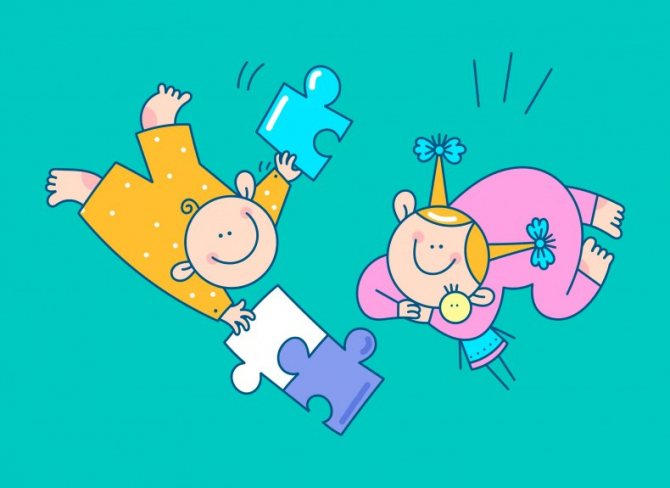
And girls opt for dolls, children's jewelry, fairytale castles and other items belonging to this gender category of games.
- Closer to the age of 4-7 years, children understand that their gender will no longer change and begin to behave accordingly, taking into account the behavior of the women and men around them.
- This is the gender role of every person in this life. Therefore, at this stage they are trying to consolidate the gender education of preschoolers, but there are not always conditions for this.
- Indeed, in the modern world one can often observe a picture where a man and a woman have changed places. The female gender has become strong and courageous, and the man shows more qualities of the weaker sex. But there are reasons for this.

For example, a girl was raised by one mother and there was no one to stand up for her, not a man. Therefore, from childhood, a woman took on a masculine character.
Or, on the contrary, the situation with a boy who was raised by his grandmother and mother. And with their best intentions, they protected the boy from all male work and difficulties, thereby compensating for the missing male shoulder.
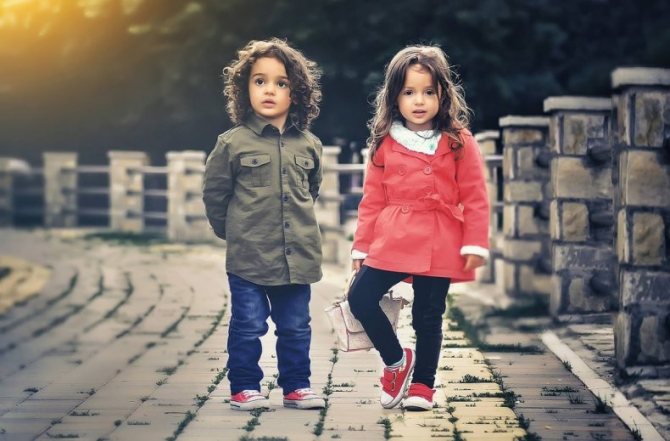
Sex-role approach
The basis of this approach is the theory of structural functionalism, developed by American sociologists Talcott Parsons (1902-1979) and Robert Bales. The authors use strict differentiation of roles between individuals, in accordance with their gender. Thus, the man was assigned the role of breadwinner, and the woman the role of mother and housewife. This version of the distribution of roles was considered by the authors to be optimal for the functioning of the family and society as a whole. The gender role approach is an example of a traditional patriarchal model of behavior that became widespread and consolidated within the framework of pre-industrial society.
In accordance with the gender-role approach, the formation of gender identity in the process of socialization of a child should occur through the assimilation of typical characteristics of one’s gender. Thus, boys are oriented towards creation (instrumental role) and creation, and girls are oriented towards caring and serving. It is believed that this is provided for by nature itself. In relation to American society, the instrumental role primarily meant financial support for the family. In turn, the woman, while the man works, takes care of the children and home, maintaining an atmosphere of mutual love and support. At the same time, the inclinations and interests of the individual himself, which also determine the education of gender regardless of sex, were not taken into account. More precisely, they could simply coincide if a man or woman had inclinations and interests that corresponded to their gender role positions. If this did not happen (a man or woman showed interest in activities that were not typical for their gender), then they simply had to come to terms with established patterns of behavior. Thus, the task of society is to educate men and women in accordance with traditional gender roles determined by their biological affiliation.

Gender education of preschoolers in a kindergarten
Author: Shapovalova Olga Viktorovna
Topic: Gender education of preschool children in a kindergarten
Explanatory note
The problem of raising and educating a child in accordance with his gender is an urgent task of pedagogical work with preschool children. Social changes taking place in modern society have led to the destruction of traditional stereotypes of male and female behavior. Against the background of these changes, the internal psychological positions of children and their consciousness also change: girls become aggressive and rude, and boys adopt a feminine type of behavior. Observing children, you can sometimes see that girls lack modesty, tenderness, patience, and do not know how to peacefully resolve conflict situations. Boys, on the contrary, do not know how to stand up for themselves, are physically weak, lack stamina and emotional stability, and they lack a culture of behavior towards girls. The content of children's games is also alarming: children demonstrate patterns of behavior that do not correspond to the gender of the child, and do not know how to negotiate in the game or assign roles. In addition, during work, children do not always know how to independently distribute responsibilities, taking into account the gender of their partner.
Children's activity cannot be complete on a purely verbal level, outside the objective environment, otherwise the child will lose the desire to learn new things, and apathy and aggression will appear. The same sensations arise in parents when the subject environment is dull, gray and unattractive. The surrounding space, which meets the requirements of the current immediate and long-term creative development of each child, and contributes to the timely identification and development of his abilities, will help to avoid the manifestation of such negative feelings.
Despite all the difficulties of pedagogical work, it is very important for the teacher to be an individual, to have a high moral, cultural and professional level, to be an optimist, because “personality shapes personality.”
Relevance of gender education
is currently enormous, since modern society is categorically against men and women having only a set of advantages based on their gender.
Gender education in preschool educational institutions calls for the fact that we all want boys to demonstrate not only unbending will and muscles. We also wish that boys and men would show kindness depending on the situation, be soft, sensitive, be able to demonstrate care towards other people, and respect family and friends. And women would be able to express themselves, build a career, but at the same time not lose their femininity.
The real way out of this sad situation is targeted gender education, both in kindergarten and at home. Targeted education provided to a girl or boy in preschool age will significantly affect the development of personality. And it will allow girls and boys to develop those personality traits that will allow them to be successful in modern society.
The biggest role of gender education in the family is to ensure that men do not lose the ability to play the right role in the family, do not transform from the main breadwinner into the main consumers and do not shift the upbringing of children onto women’s shoulders. Well, women, in turn, would not become simply creatures without gender.
Nowadays, many children associate their gender with precisely this distorted behavior: girls become straightforward and rude, and boys adopt the type of behavior of the women who surround them at home and in the garden, clinic, etc. Observing children, you can notice that many girls lack tenderness, sensitivity and patience, and do not know how to resolve conflicts peacefully. Boys, on the contrary, do not try to stand up for themselves, are physically weak, have little endurance and are emotionally unstable.
Modern little knights are completely alien to any kind of culture of behavior towards girls. There is also concern that the content of children's games demonstrates behavior patterns that do not correspond to the child's gender. Because of this, children do not know how to negotiate in games and assign roles. Boys rarely show a desire to come to the aid of girls when physical strength is needed, and girls do not strive to help boys where thoroughness, accuracy, care are needed, these are the games for gender education.
Therefore, gender education in kindergarten and in the family is simply necessary for the development and socialization of a child in our society.
Target:
increasing professional level on the topic, systematizing work on the use of a gender approach in raising children in preschool educational institutions.
Tasks:
- get acquainted with theoretical knowledge about the psychosocial differences between boys and girls, the characteristics of their upbringing and education;
- organize the educational process with children in a group, taking into account gender characteristics;
- contribute to the development of gender competence in parents.
Calendar-thematic planning of work with children
| Period | Subject | Target | Content |
| September | “Look what I am!” | Learn to identify with members of your own gender. Form ideas about yourself as a unique, valuable, inimitable personality | • Didactic game “Dress the doll.” • Drawing “My portrait”. • Working with the mirror “My Emotions”. • Guessing riddles about body parts |
| October | "Who is who" | Develop the ability to correlate one’s gender-role behavior with the behavior of others, adequately assess the gender-role behavior of peers and one’s own | • Dramatization of the fairy tale “Ryaba Hen” • Reading “Two comrades walked through the forest...” by L. Tolstoy with discussion. • Teacher’s story “Rules in our group” |
| November | "I am among others" | Develop ideas about other people based on comparing yourself with them, highlighting similarities and differences. Cultivate friendly relationships | • Outdoor game “Traps in pairs”. • Didactic game “Describe the one on the right...” • Learning songs about friendship. • Watching the cartoon “Cheburashka” • Constructing a “House for Friends” from building material |
| December | "I and my family" | Create conditions for the implementation of knowledge about the standards of “male” and “female” behavior in play and real relationships with peers. To form ideas about the role and employment of men and women in the family | • Exhibition of family photographs. • Role-playing games “Waiting for Guests”, “Hospital” • Drawing “My Family” • Watching cartoons “Bag of Apples”, “Three from Prostokvashino”, “Cat’s House” |
| January | "Who am I?" | Form ideas about “female” and “male” activities, external and internal aspects of masculinity and femininity | • Lotto “Professions” • Reading the story “How I Was a Mother” by J. Segel. • Didactic game “Women’s and men’s work” • Excursions to a construction site, to a hairdresser. • Working with pictures “Manners of behavior” |
| February | “What are boys made of?” | Form an emotionally positive attitude towards fulfilling a future social role | Reading the poem by E. Uspensky “If I was a girl.” Reading “The Story of an Unknown Hero” by S. Marshak. Conversation on the story “The Knight” by V. Zheleznikov. Application “Gift for Dad” for Defender of the Fatherland Day |
| March | "Girls' World" | Foster a culture of communication with partners of the opposite sex. Continue to teach how to be neat: to see and eliminate flaws in your appearance in your hair, clothes, etc. | Joint work with distribution of responsibilities “Let’s wash the doll’s clothes.” Application “Postcard for Mom”. Didactic game “Dress the doll to the theater, store, disco...” Development of fine motor skills: “We make decorations with our own hands” |
| April | "I was born!" | Continue to form ideas about the birth of a new life with a general mechanism of childbirth | Didactic game “Who was who?” Guessing riddles about animals and their babies. Role-playing games “Mothers and Daughters”, “Family”. Teacher's story “How animals care for their young” using illustrations. |
| May | "I am among strangers" | Continue to familiarize children with the rules of behavior in society. | Reading the work “How a Boy Got Lost” 3 by Alexandrova. Watching the cartoon "Masha and the Bear" with discussion. Role-playing game “Cafe” (learning the rules of good manners) |
Working with parents
.
September
Folder: “Gender education in kindergarten: what is it and why?”
October
Consultation “Family is the main factor in the development of a child’s gender identity”
November
Tips for raising your daughter: “How to raise a girl”
December
Advice to parents on raising sons: “Psychological development of boys.”
January
Recommendations for didactic games on gender education.
February
Memo: “Raising boys and girls in Russian traditions.”
March
Photo competition: “Dad with child” and “Mother with child”
April
Parents' meeting "For parents about raising girls and boys."
May
Questionnaire on gender education for parents.
comments powered by HyperComments
Gender approach
The gender approach is based on the theory of the social construction of reality by Peter Berger (1929) and Thomas Luckmann (1927). The “revolutionary” position of this approach is the idea that gender roles are not innate, but are created in the process of interaction of individuals in society. Accordingly, the formation of a person’s gender, family, and citizenship should take into account, first of all, his individual psychological characteristics (character, temperament, interests, abilities, etc.), and not gender. Both women and men can perform those activities in which they are more interested. In modern society, for example, male fashion designers, female managers, etc. have long become commonplace. Nevertheless, stereotypical thinking regarding gender roles in society continues to exist.
Thus, supporters of the gender approach pursue the idea that the formation of gender in preschool children should be determined primarily by their personal characteristics. The boy will not be instilled with the idea that crying is unmanly, and tears are an indicator of weakness. In turn, the girl will not think that she should be neat “because she is a girl” - since neatness is not a purely feminine trait. When choosing toys for their child, parents (if they are supporters of a gender approach) will not be guided by the hackneyed scheme according to which, as a rule, the gender identity of preschoolers is formed in the traditional education system: boys - cars, girls - dolls. A little girl can be interested in cars in the same way, and a guy can be interested in a doll, and this one will not be forbidden. At the same time, the girl will not become “less of a girl,” and the boy will not become “less of a boy.”
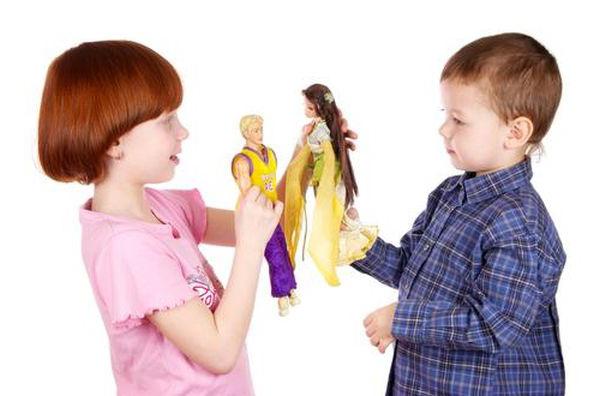
Formation of gender identity in preschool children
The problem of developing children's gender identity in preschool institutions is more relevant today than ever. Social changes taking place in modern society have led to the destruction of traditional stereotypes of male and female behavior. The democratization of gender relations led to a confusion of gender roles, the feminization of men and the masculinization of women [5,45].
The content of currently existing programs for raising children in preschool institutions is compiled without taking into account the gender characteristics of boys and girls. They focus on the psychological, individual and age characteristics of children, without emphasis on gender. Therefore, in kindergartens and further at school, “asexual” (average) education is carried out, which ultimately leads to the formation of a feminine (feminine) boy and a masculine (masculine) girl. New approaches to the organization of the educational process, defined by the Federal State Educational Standard, offer a different view on the content of moral education of preschoolers, including, in addition to the formation of family and citizenship, issues of gender education of preschoolers. Gender education is the formation in children of ideas about real men and women, and this is necessary for the normal and effective socialization of the individual. Targeted gender education provided to a girl or boy in preschool age will significantly affect the child’s development. And it will allow girls and boys to develop those personality traits that will allow them to be successful in modern society. The gender approach to education involves not only explaining to children the difference between both sexes and the corresponding rules of behavior. Thus, gender education activities include the formation in children of a sense of tolerance towards each other [1,20].
Therefore, the role of the educator is significant and the main task is: overcoming formalism in teaching and upbringing, turning to the interests and needs of a particular child, to the ability to see, hear and understand his originality, individual and age characteristics, regardless of gender.
In order for a boy to grow up to be a real man, it is necessary to cultivate in him emotional stability, courage, determination, responsibility, a chivalrous attitude towards female representatives, and, first of all, the desire and ability to protect [3,14].
In order for a girl to become a good housewife and loving mother, you need to pay attention to the education of tenderness, caring, modesty, accuracy, tolerance, and the desire for peaceful resolution of conflicts [3,15].
When working on the problem of gender socialization of preschool children in a kindergarten, the following goals are set:
1. Form gender identity in boys and girls through the creation of a subject-specific socio-cultural environment.
2. Develop and implement a gaming complex taking into account gender characteristics for the development of children at each age stage of preschool childhood.
3. Carry out pedagogical education of parents, involve them in creating conditions for the upbringing and development of the child in accordance with gender.
In groups it is necessary to create special functional centers (zones): a center for speech development, a game library (a center for intellectual and mathematical games), an experimentation center, a manual labor center, an arts center, a center for directing and role-playing games that take into account the interests of girls and boys. Organizing the living space for children involves observing the zoning of a group room, which allows them to engage in different types of activities without interfering with each other.
The speech development center can be represented by didactic games, sets of paintings, pictures that promote the development of speech in boys and girls. Boys' vocabulary is quite wide, but the active vocabulary is dominated by verbs and interjections, that is, words that convey actions, so boys are given plot pictures about military operations, rescue operations, exploits, sports competitions, and boys' games. Girls' speech is more emotional; they are prone to subject-evaluative speech, in which nouns, adjectives, negations, and affirmations predominate. Sets of story-based pictures and educational games for girls are about nature, girls’ games, and the moral actions of people.
The literary and theater center will be divided into a library for girls and boys, and books and theaters that are interesting to both sexes will be presented in the center.
Fill the experimentation center with a variety of material for research, not only in nature, but also with objects of inanimate nature. Boys, researchers and experimenters by nature, “look” here more often. Girls are more attracted to indoor flowers, caring for them, collecting herbariums, and seeds for the collection area.
by type of art, but for independent productive activities you can choose coloring books for girls and boys. Boys more often draw equipment, military operations, large houses, streets; their drawings are filled with action and movement, so appropriate templates and stencils are selected. Girls more often draw people, princesses, themselves, draw small details, eyes, mouths, etc. The color scheme is brighter, sets of colored pencils, crayons, and paints have a greater variety of shades.
The manual labor center will be divided into a workshop for boys and a handicraft center for girls. Based on these centers, organize separate clubs for boys (for example, the recommendations of T. N. Doronova) “Samodelkin” and for girls “Magic Needle”).
The center for creative games is the most important part of the subject-development environment, aimed at the formation of gender-role ideas and preferences of children, giving the child the opportunity to freely interact with peers [6,68].
In accordance with the objectives set, it is necessary to fundamentally change the approach to organizing play areas for girls and boys.
The group room can be divided into two “kingdoms” using carpeting. Since all teachers know that role-playing play plays a special role in developing gender stability in girls and boys, therefore, pay special attention to the selection of materials and equipment for play activities of girls and boys.
Materials and equipment used by girls and boys (soft toys, printed board games, books, sets of substitute items) should be placed in the group by mutual agreement.
In each play area, place boxes with attributes for independently organizing role-playing games (for boys - “Military”, “Sailors”, “Ministry of Emergency Situations”, “Drivers”, etc., for girls - “Hospital”, “Shop” , “Atelier”, “Beauty Salon”, etc.)
Discuss with the boys the location of a large wooden construction set and a toy “car park”. At the same time, each boy must have his own personal set, for the condition of which the child is personally responsible. At the end of the game, the set is folded and returned to the place designated for storing “male” materials.
You can also discuss the arrangement of furniture in the play corner with the girls and agree with them on where in the play corner they will store doll bedding, clothes, dishes, etc.
Dividing the group space into two zones does not mean that girls and boys play separately. They also enjoy interacting with each other. For example, in the girls' area there is a box of tools, and when playing Family, boys can use the tools as Dad. In the boys' area there is a doctor's suitcase, where girls can provide “medical care” to boys if necessary, in accordance with the plot of the game [3,16].
Joint role-playing games help teach the social roles of girls and boys and the ability to interact with each other. These are games such as “Rescuers”, “Cellular Salon”, “Space Travel”, “Car Park” and others. Games familiar to everyone are replenished with new paraphernalia for boys and girls
The older children are, the more they need multifunctional material that serves their various play plans.
The subject environment at each age stage is distinguished by a certain set of games and toys that meet the characteristics of the gender-role development of boys and girls.
There are several main trends in the selection of toys during the transition from younger to older preschool age:
— a gradual transition from larger toys to smaller ones;
- from simple dolls and plastic cars to more realistic toys, replica toys.
In younger groups, the process of primary gender identification occurs and it is associated with clothing and hairstyle. Didactic games, as well as story-based games, introduce children to women's and men's clothing. The game “Let’s dress Katya for a walk” is added to the game “Let’s dress Sasha for a walk.” To the plot game “Let’s put Tanya to bed” is added “Let’s put Misha to bed” and so on. Next to a girl doll dressed for the season, a boy doll appears in the reception area [3,23].
In middle age, children unite in small groups to play together, most often these are boy-boy or girl-girl groups. The need for separate corners equipped with appropriate play material is increasing. More often than not, “girl” toys are enough, but for boys, toys are supplemented. A boy in a group of peers of the same sex acquires masculine characteristics and becomes less dependent on his mother. Therefore, group activities are especially characteristic of boys’ games [3,25].
When making changes in the play space, strive to arouse in children affection and sympathy for new products, a desire to participate in the arrangement of the group. So, for example, having set up a “dinosaur corner” for boys, invite them to build buildings from building material and fantastic trees from natural or waste material [3,26].
At an older age, boys and girls unite to play together, performing male and female roles. Boy dolls (from babies to men) are added to the usual set of toys.
Toy houses with furniture and clothes for women (Barbie dolls and a house for a Barbie doll) appear in girls' corners.
The dressing up corner, which was only in younger groups, has a different content at older ages: girls dress up, learn to design outfits, showing creativity and imagination. For boys, choose appropriate costumes of knights, pages, princes, and heroes [4,43].
An important task when designing a group room taking into account the gender characteristics of children was to help the child to have the opportunity to repeatedly confirm that she is a girl and he is a boy. To do this, use the simplest markers of gender differences, but taking into account the individual interests and needs of each child [2,45].
Both educators and parents can take part in the production of markers of gender differences. But at the same time, the main requirement is an individual approach to children, taking into account their tastes and attachments to the image on the label and its color scheme.
Designate the lockers in the reception area with pictures for girls (bows, girl dolls, flowers) and for boys (cars, airplanes, stars) with the appropriate color scheme. There are corresponding markers on the chairs (height designation in a red flower or in a blue circle).
To carry out physical activity and exercise for boys and girls, sports equipment is selected in accordance with the requirements of SanPiN, but the content side of physical activity also has its own specifics depending on gender: boys and girls have their own motor preferences associated with the characteristics of the physical development of boys and girls . Therefore, when organizing games and independent activities, attributes are selected: for boys this is throwing at a target, playing in small towns, football, girls successfully cope with hoops, love jumping rope, calm games with the ball [5,34].
The aesthetics of the design of a group room should correspond to the aesthetic education of preschool children and have a gender orientation. Bring the conditions closer to those at home, introduce into the interior elements that decorate both men's and women's housing (paintings, engravings, works of folk art, exhibitions of original works of girls and boys, mothers and fathers, and more). Make corners in the reception room where girls and boys can put themselves and their clothes in order. In the bedroom, girls' cribs should be covered with pink bedspreads, and boys' beds with blue ones. The bedroom should be divided into two parts: one for girls, the other for boys. Designate the toilet rooms in the form of a funny girl and a cheerful boy.
The overall design of the room ensures the emotional well-being of children and adults. The environment is as close as possible to home, instilling a feeling of security and self-confidence [4,56].
A properly organized developmental environment allows every boy and every girl to find something they like, believe in their strengths and abilities, learn to interact with teachers and peers, understand and evaluate their feelings and actions, and master the rules of male and female behavior.
Various forms of pedagogical education of fathers and mothers bring certain results. The main result of the work is that every adult should receive comprehensive answers to the questions “How to raise a son? Daughter? What kind of subject environment should I create for my child at home? How to choose the right toy for a child?
Literature:
1. Doronova T. N. Girls and boys 3–4 years old in the family and in kindergarten. - M., 2008
2. Eremeeva V.D., Khrizman T.L. Boys and girls - two different worlds. - Moscow, 1998.
3. Boys and girls: two halves? // Hoop, 1998 No. 6
4. Boys and girls // Hoop, 2007. No. 5
5. Panfilova M. A. Psychological foundations of raising girls and boys in kindergarten and in the family. - Moscow, 2009.
6. Shelukhina I. P. Boys and girls. - Moscow, 2008.
Gender patterns in child development. Polytyping process
The formation of femininity/masculinity in children occurs at an early age. Thus, by approximately 4-5 years of age, gender identity is fixed (in the second youngest group of kindergarten). Children begin to show preferences for typical games that match their gender. This correspondence, as already mentioned, is determined by the cultural norms of society. Also, the formation of gender in preschoolers is manifested in the fact that children prefer to play more with children of the same gender. Sex-typing is called sex-typing in psychological science. It is accompanied by the individual’s acquisition of preferences, personal attitudes, skills, “I”-concept, etc. The significance of sex-typing, which determines the formation of gender, family, and citizenship in preschoolers, is considered differently in various psychological theories of development.
Raising a boy
When educating a boy on gender, one must take into account the fact that in the future he must become a courageous person - a protector of the family. In addition, other qualities must be formed in him that will not allow him to turn the baby into a rude and ill-mannered person, so just dressing and feeding the child is not enough.
In order for a small man to grow into a real man, in matters of education, emphasis should be placed on the following points:
- Give special “important” tasks and be sure to praise the baby after completing them. It is necessary to emphasize that the child took the task assigned to him responsibly.
- Provide the baby with the opportunity to independently solve some everyday problems, and also ask the boy to explain his choice.
- All the child’s aspirations should not be suppressed. His initiative needs to be supported.
- The child should regularly communicate with children of his own age. A good activity would be to visit any sports section.

When it comes to gender education of a boy, you need to know when to stop. You can't overdo it. First of all, you should not burden the child with all the household chores and demand unquestioning obedience from him, arguing that the child must be strong in everything. Such actions will deprive the boy of his childhood. Despite the peculiarities of upbringing, we should not forget that a baby is an ordinary child who has the right to show weakness.
Both parents should influence the boy's upbringing. To prevent the baby from growing up selfish, without a sense of compassion and helping others, the boy should see how his father helps his mother with household chores.
There are also norms of behavior that must be observed regardless of gender. This is tolerance, respect for other people's and one's opinions. Such concepts will make children not weak, but socially adapted.
Polytyping in psychoanalytic concept
At the basis of sex typification, as its primary mechanism, psychoanalysis highlights the process of identification of a child with a parent of the same sex. The process of identification is carried out as part of the child's exploration of his own genitals as sexual differences. The appearance of penis envy and fear of castration, which arise in boys and girls, lead to the successful resolution of the Oedipus complex. However, this concept has also been criticized by feminist schools because it emphasizes the biological basis of gender differences.

What is Gender
This concept denotes a person’s belonging to a certain social gender, which is formed in the process of developing personal qualities, including psychological, social and cultural influence on both boys and girls.
- Gender translated from English means gender, which in turn refers to social sex as a product of culture.
- A gender approach in the educational and educational system is necessary, first of all, so that every child can express his or her identity.
- In a future life, this can determine the choice of profession and fully self-realize.
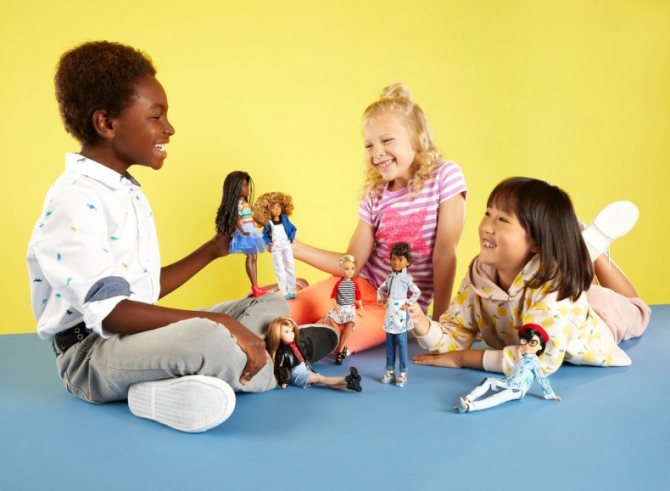
At the same time, this approach to education will help you get around the “sharp corners” in adult life with minimal losses, thanks to the flexibility shown in your behavior.
Polytyping and social learning theory
Unlike psychoanalysis, social learning theory emphasizes the significant role of the reward-punishment system in the development of a child’s gender identity. If a child is punished for behavior that the parents consider unacceptable for his gender (or, conversely, is encouraged for what is acceptable), then the process of consolidating certain behavior patterns in the child’s mind occurs. The second significant aspect in the theory of social learning is the processes of observation and modeling.
Accordingly, social learning theory considers the source of sex typification in the sphere of socialization differentiated by sex. One of the advantages of this theory is the application to the development of female and male psychology of a general learning principle that is well known in relation to the development of many other types of behavior.
The nuances of raising girls and boys
Themes of gender education have always been the main issue that the church dealt with until the 20th century, dictating conditions for the behavior of men and women. In modern life, issues of education are dealt with by both the family and educational institutions, which may relate to general education or a religious bias.

At the same time, the gender education of boys and girls differs significantly.
It is recommended to raise the male half as follows:
- For a boy, love is trust. He will feel confident if he is loved;
- An example for a boy should be a father, uncle, grandfather, coach, but with good upbringing traits;
- Maintaining discipline. This will help develop responsibility;
- You can't stop a child from crying. The will to emotions is important for every person;
- Building a trusting relationship with the child;
- Learning the basics of cooking and cleaning;
- Have games for boys that will contribute to further development.
Gender education plan for girls:
- Showing care and love for the child;
- Close connection with mother;
- Respect and love from dad;
- Teaching the basics of cleaning and cooking;
- Pride in your child;
- Providing girls with toys specific to their needs;
- Development of motor skills.

The most important thing that is emphasized in gender education is the manifestation of love and respect for children. And love, as they say, works miracles.
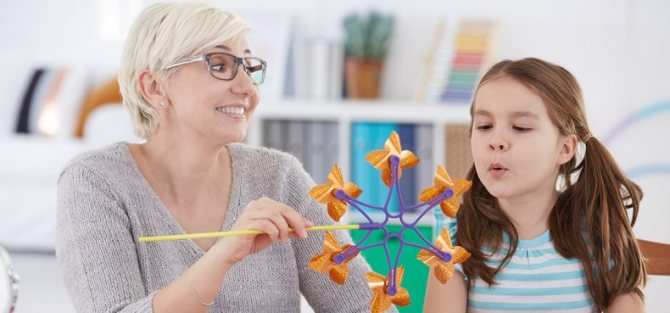
Polytyping within the framework of the theory of cognitive development
This theory primarily focuses on the primary agents of gender-role socialization of the individual. The process of sexual typing is carried out invariably, naturally, based on the general principles of cognitive development. In other words, from the perspective of cognitive development theory, because children need the cognitive stability of self-identification as women or men, this motivates them to value what seems more like themselves in gender terms. A gender-based assessment system, in turn, encourages the child to act actively in a gender-appropriate manner, by making appropriate efforts to master gender attitudes, and by giving preference to gender-identical peers.
UDC 373.211.24
Gender education of preschool children through interaction between preschool educational institutions and families
Gender education of preschool children through interaction DOE and family
Author: Elena Alekseevna Rodina – Russian Federation, Kaluga, MBDOU No. 57 “Ryabinka”, teacher
Author: Rodina Elena Alekseevna – Russian Federation, Kaluga, MBDOU No. 57 Ryabinka, educator
Abstract: The article examines the problem of gender education of preschool children. Particular attention is paid to the cooperation of teachers of preschool educational institutions and parents within the framework of the Federal State Educational Standard for preschool education. Modern methods and forms of interaction with parents to form the foundations of gender education for preschool children are presented.
Abstract: The article considers the problem of gender education of preschool children. Special attention is paid to cooperation of teachers of preschool educational institutions and parents in the GEF pre-school education. Presents modern methods and forms of interaction with parents.
Key words : Federal State Educational Standard for Education, cooperation, parents (legal representatives), gender education, forms and methods of work
The keywords: FSES TO, professional standards, cooperation, parents (legal representatives), gender education
Today a lot is written and spoken about gender education. Preschool educational institutions are faced with a problem: how to educate preschoolers, taking into account their gender characteristics? What are the advantages and disadvantages of separate and mixed upbringing? Do our children need gender culture?
It is important to note that, on the one hand, there is an urgent need in society to introduce a gender approach to raising children, and on the other hand, the issue of gender education has not been sufficiently studied and developed.
Many scientists and specialists in the field of pedagogy, both foreign and domestic, considered the issue of gender education in different ways.
Aristotle spoke out for the separate education of boys and girls, since he believed that men and women have different natures, and therefore should have different knowledge and skills, carry out their “natural” duties without interfering in each other’s affairs.
The French philosopher Jean Jacques Rousseau suggested that women and men behave differently: a man should rely only on his own judgments, do not lie, show frankness, directness, and conscientiousness; a woman should take into account the thoughts of other people, be shy, cunning, and flirtatious.
Vasily Sukhomlinsky believed that boys should receive a male education, girls - a female education. He pointed out the need for sex education for boys and girls based on harmony and mutual respect.
The work of teachers in a preschool educational institution is to ensure that children are independent and have certain moral qualities that are necessary for later life. It is also important that children learn social, ethical standards of behavior, interaction with adults and peers. And most importantly, they had a certain reserve of knowledge, skills and abilities. And parents should play an invaluable and important role in this.
Work on interaction with families of pupils is one of the priorities in the field of education.
With the introduction of the Federal State Educational Standard for Educational Education and professional standards, teachers must provide conditions that are necessary for the social situation of children’s development, and involve interaction with parents (legal representatives) on issues of children’s education and their direct involvement in educational activities [2].
“The process of preschool childhood is a period during which teachers and parents (legal representatives) must understand the child and help him discover the unique opportunities that are given to him by his gender, if we want to raise men or women, and not asexual creatures who have lost the advantages of their gender" [1].
It is clear to all preschool teachers and no one will dispute that modern families own various computer technologies, visit kindergarten websites, conduct conversations on various forums for parents, but at the same time, from my practical experience, it is noticed: parents do not have sufficient knowledge and ideas about the comprehensive development of children, including the importance of gender education.
Before involving parents in cooperation on the issue of gender education of children, I studied this problem. Consultations, pedagogical councils, and workshops were held with the teaching staff. This allowed me to expand my knowledge about gender education of preschool children, and to determine methods of interaction with families of pupils on this topic.
I believe that modern innovative methods of work based on cooperation and interaction between teachers and parents, such as parent master classes, trainings, discussions, and interactive games, are more effective in building constructive relationships with parents. In such forms of interaction with parents, the principle of partnership and dialogue is implemented.
One of the most common forms of involving parents in the educational process of a preschool educational institution is the project method. In my opinion, the method of project activity is the most effective and interesting in increasing competence about gender education of children.
As part of the project activities, a survey was conducted with parents on the topic “Gender education of children of senior preschool age.” After analyzing the questionnaires, it turned out that not all parents fully understand what “gender education” is, what the education of boys and girls consists of. Many people believe that this topic is relevant, but parents do not know that preschool educational institutions pay great attention to this.
Therefore, I held a parent meeting “Girls and boys - two different planets.” At the parents' meeting, the topic was raised about increasing the competence of parents in matters of gender education of children, which contributes to a favorable process of formation of boys and girls.
Parental example in the relationship between father and mother plays an important role in raising a child, including in the formation of his gender identity. Therefore, it is important that people close and dear to the child serve as a positive example in the upbringing of masculine and feminine principles.
For this purpose, I organized and conducted master classes with dads on “Bird Feeder” (for boys) and with moms on “Beautiful Postcards” (for girls).
The dads showed the boys the parts for the feeder and talked about the necessary tools that would be needed to assemble it.
On the eve of the New Year, mothers and girls made cards using modern arts and crafts techniques: quilling, scrapbooking, trimming, etc. The biggest pleasure for the girls was that they made jewelry together with their mother.
In the process of conducting creative workshops with parents, I focused on raising a future family man, talked with children about how boys are future men and fathers: courageous, brave, strong and hardworking, able to help and protect those who are weaker, and girls - these are future women and mothers. They should be gentle, feminine, kind, take care of the family and maintain comfort in the home.
The idea of holding the “National Abundance of Mother Russia” entertainment turned out to be interesting. The topic of not only gender education, but also the formation of tolerant consciousness was touched upon here. During the entertainment, parents from different cultures presented their national dishes. As a result, a cookbook with recipes and photographs of children's and parents' favorite dishes appeared in the kindergarten.
A workshop was held with parents on the topic “When we were little.” At the seminar, parents were invited to plunge into the world of childhood and choose, in their opinion, the toy that their children would choose. Games were also organized. One group of parents was asked to assemble the silhouette of a girl from cut pieces of newspaper, magazines, and colored paper (by tearing), and the other group was asked to also assemble the silhouette of a boy. Decorate them with felt-tip pens and pencils.
As part of the project, family holidays “Family Day”, “Winter Fun”, “March 8” were organized. This contributed to increasing the authority of parents.
As a result of the project activities, the final product was the collection “ABC for Girls” and “ABC for Boys”, with characteristic features that are inherent in boys and girls.
Thus, the interaction between the preschool educational institution and the family sets the goal of creating an atmosphere of mutual interest in the process of gender education, developing a pedagogical approach to the problem of studying and raising a child.
More than 75% of parents managed to interest and captivate the problem of gender education of preschool children; we can conclude that the methods and forms I used were not chosen in vain. And the goal that I set for myself, to increase the competence of parents in the issue of gender education of children, was achieved. And most importantly, trust, mutual understanding and interest in raising children appeared between my parents and me.
Bibliography:
1. Doronova T.N. Girls and boys 3-4 years old in family and kindergarten / T.N. Doronova. – M.: Linka-Press, 209. – 224 p.
2. Federal state educational standard for preschool education. – [electronic resource] https://Ministry of Education and Science.rf
Recommendations for parents on raising daughters
Here is what advice experts give on this issue:
- First of all, a trusting relationship with her mother is important for a daughter. But the father also plays an important role here. If a child from an early age sees a warm relationship between parents and a caring attitude towards each other, he will form the correct idea of \u200b\u200bthe family.
- When devoting time to his daughter, the father must demonstrate differences in behavior in terms of gender. Seeing care and benevolence, she will begin to realize that she is worthy of a man’s love.
- Positive self-esteem develops if parents see their daughter as an individual from an early preschool age.
- Girls have a special connection with their mother. They can share their little secrets, and it is the mother who should teach her daughter the skills of housework , cooking, etc.
Anxious mother : what harm does she do to children?
